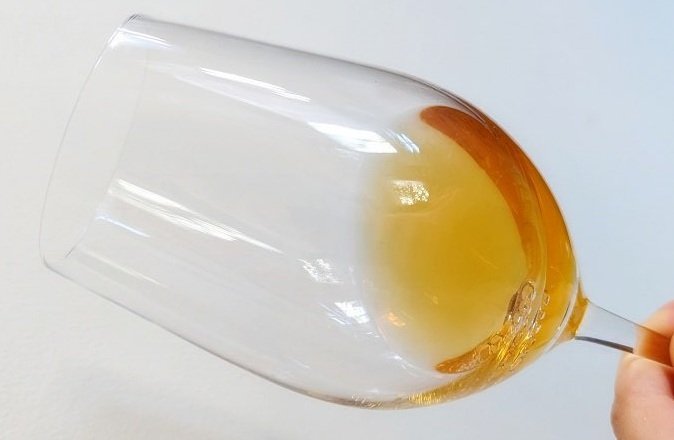
Sherries Comparison
| Type | Aging Regimen | Biological or Oxidative Aging | Sweet or Dry | Flavors |
|---|---|---|---|---|
| Fino | Under flor (yeast layer) | Biologically | Dry | Crisp, almond, green apple |
| Amontillado | Biological aging followed by oxidative aging | Both (starts biologically, then exposed to air) | Dry | Nutty, caramel, dried fruit |
| Oloroso | Oxidative aging | Oxidatively | Dry | Rich, toffee, walnut |
| Pale Cream | Blended (Fino + sweet wine) | Biologically (Fino part) | Sweet | Light, floral, slightly sweet |
| Medium Cream | Blended (Amontillado + sweet wine) | Both (Amontillado part starts biologically) | Sweet | Caramel, toffee, medium sweetness |
| Cream | Blended (Oloroso + sweet wine) | Oxidatively (Oloroso part) | Sweet | Rich, chocolate, dark fruit |
Are you a fan of Sherry? Or perhaps you want to be a fan of Sherry, but you’re still figuring it out.
Sherry, a fortified white wine from Spain, comes in dry and sweet styles, made using a complex fractional blending and aging technique called solera. Sherry offers various flavors like chamomile, nuts, praline, leather, and raisin. The winemaking process will determine each style of Sherry: light or full-bodied, dry or sweet.
Here’s what you need to know about the complicated ways that Sherry is made to craft this uniquely Spanish wine.
- Where Is Sherry Made?
- What’s Sherry Made of? Is Sherry Made from Grapes?
- How Is Sherry Made?
- Step 1: Make a dry white wine out of Palomino grapes.
- Step 2: Classify the wine with a tasting panel
- Step 3: Fortifying Finos and Manzanilla Sherries
- Step 4: Waiting to See What Happens – The Sobretabla
- Step 5: How to Age Finos and Manzanilla Sherries in the Solera
- How Biological Aging Works with Sherry
- What Does Flor Do to Sherry Wines?
- What Makes Sherry So Dry?
- How Do They Make Amontillado Sherry?
- How Does Oxidative Aging Work for Sherry Wine?
- How Do They Make Oloroso Sherry?
- How Do They Make Cream Sherries?
- Easy Sherry Wine Pairing Ideas
- How Is Sherry Served?
- How Do You Know If Sherry Has Gone Bad?
- Final Thoughts: Sherry’s a Mystifying Treat
- Thirsty for More?
Where Is Sherry Made?
Sherry wines are made in the southwestern region of Spain in Andalusia, right up against the Atlantic Ocean, specifically from the region between the towns of Jerez de la Frontera, Sanlúcar de Barrameda, and El Puerto de Santa María.
Geographical location plays a critical role in Sherry wine production.
The hot, dry summers with moderating winds off the Atlantic, called the Poniente, and the arid winds from across the Sahara across the Mediterranean, called the Levant, play crucial roles in keeping fungal disease down and allowing the grapes to fully ripen a reliable crop.
Helpful Tip: Here’s a full post on how wind affects wine quality (it’s a little nerdy, but you may be interested).
The history of wine production in this region of Spain dates back millennia to the Phoenicians, who established trading posts in the area and began making wine.
Fast forward, and the Sherry production process has combined traditional and modern techniques that result in some seriously delicious and distinctive wines.
What’s Sherry Made of? Is Sherry Made from Grapes?
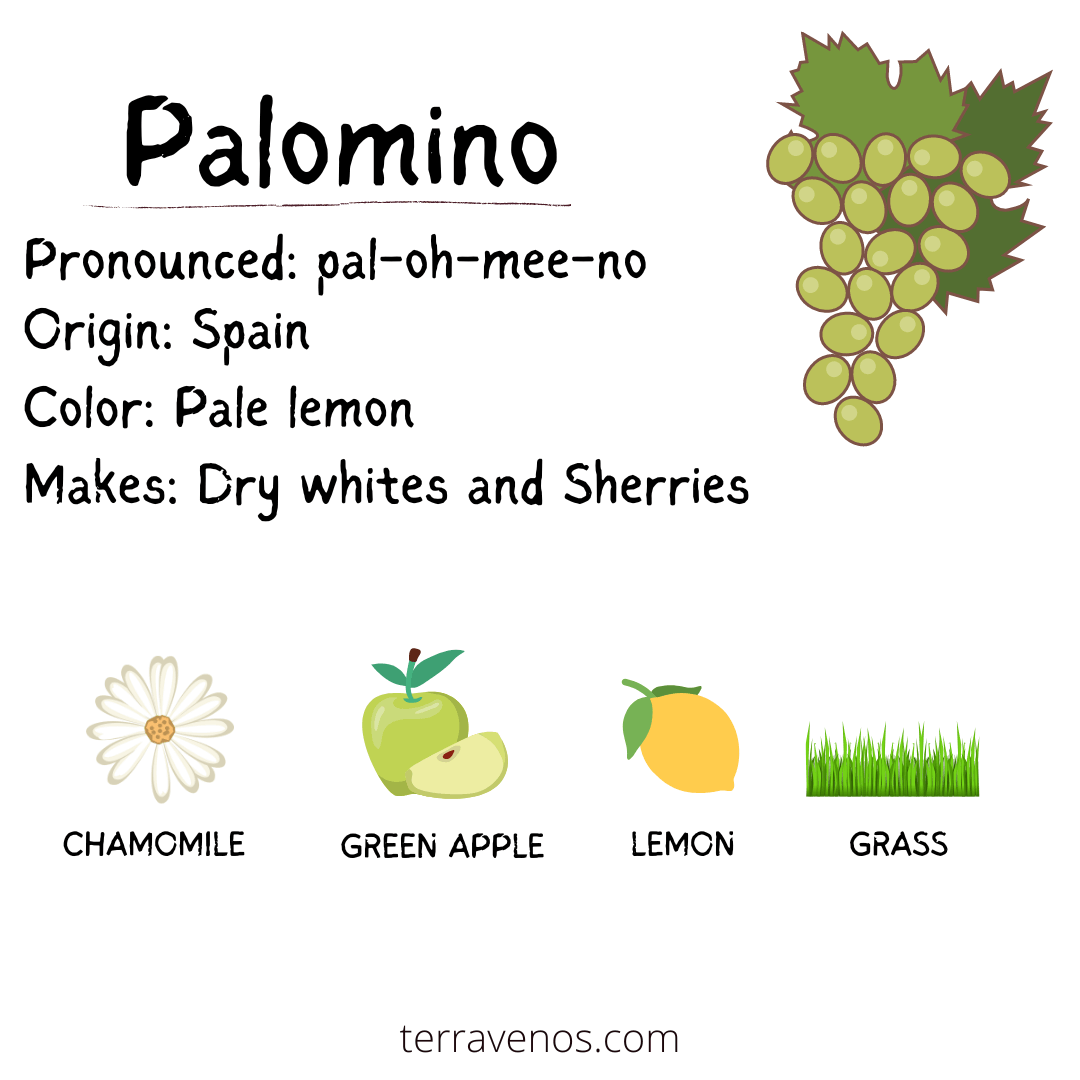
All Sherry wines are made from grapes. The vast majority of Sherries are made out of the white Palomino grape. Some Sherries are made out of Moscatel and Pedro Ximenez grapes, but those are in the minority and used for naturally sweet Sherries.
The white Palomino grape is a low acid, relatively neutral grape, meaning that it doesn’t have the pronounced aromatics you get from a Sauvignon Blanc or a Riesling, for example.
This neutral flavor profile means that Palomino can act like a blank canvas for the winemaker to introduce nuanced flavors and complexities into the wine through the winemaking process.
How Is Sherry Made?
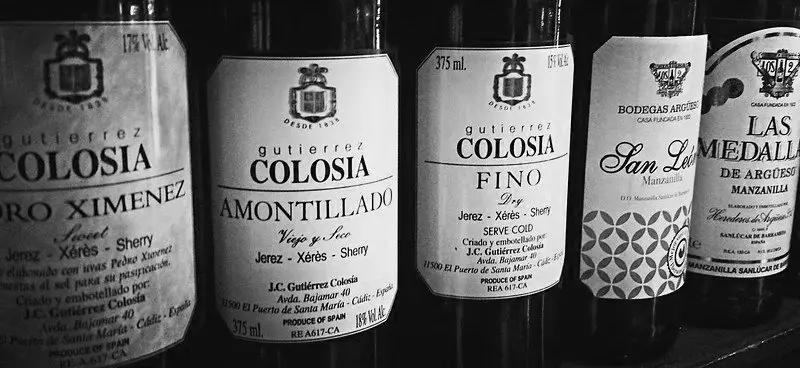
Sherry’s winemaking process is, by tradition (and necessity – but we’ll call it tradition), complicated. So, we’ll break this up into steps by starting with the base wine, then moving into how different Sherry wine styles are made in this order:
- Base Wine: Dry white Palomino wine
- Fino and Manzanilla Sherries (which are made the same way)
- Amontillado Sherry (my favorite Sherry style of all time)
- Oloroso Sherry
- Cream Sherry
Let’s get into it!
Step 1: Make a dry white wine out of Palomino grapes.
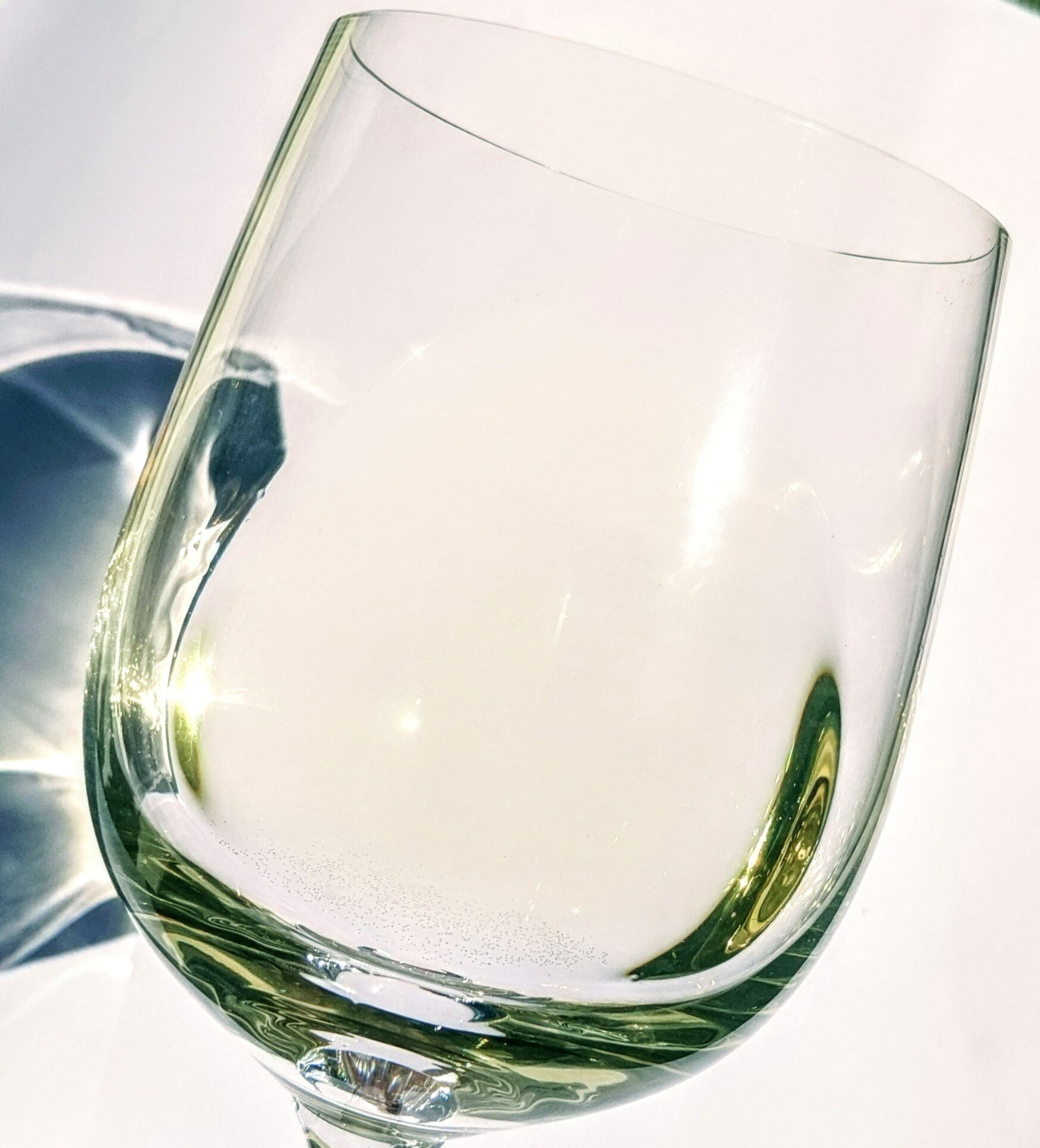
The first step to making Sherry wine is to crush and press the Palomino grapes and ferment the juice into wine like you would any other white wine (a Pinot Grigio, for example – same process).
Helpful Tip: Here’s another technical post that covers how wine fermentation works. Again, a little geeky, but may be useful if you’re just getting into wine.
There are four special steps to making dry white wine out of Palomino grapes destined for Sherry.
First, the wine that will make the lightest and most delicate styles of Sherry, including Fino and Manzanilla, will use the juice from the first pressings (this is usually around 60%-70% of the total volume of juice pressed out of the grapes). First pressings contain fewer bits of seeds and have a higher concentration of sugar and acid.
Second, the vineyards where they grow Palomino grapes are dusty. The winemaker actually clarifies the juice to settle out and remove all of those dust particles before fermentation.
Third, most winemakers will use cultured yeast to make sure that the wine ferments completely dry.
Helpful Tip: Here’s a useful post on how winemakers select yeast – it’s an involved process.
Fourth, most producers ferment the base wine in stainless steel to control the fermentation and make sure that their base wine is completely dry (no leftover juice).
Helpful Tip: Check out this post on all of the different types of vessels you can use to ferment wine. Oh! The choices!
So, the winery now has an unremarkable white wine and things are about to get interesting.
Explore: What’s the Difference Between Sherry and Wine?
Step 2: Classify the wine with a tasting panel
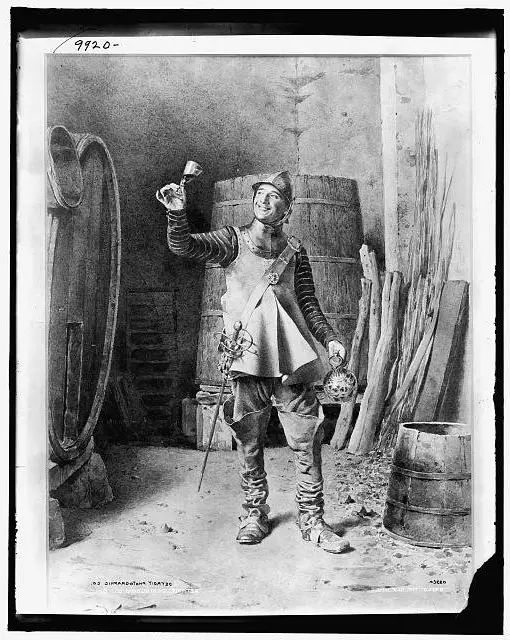
A tasting panel will go through and taste the different lots of Palomino dry white wine. They are trying to see if the wine is light and delicate, or more full-bodied with more pronounced flavors.
Light, delicate Palomino wine is set aside for biological aging to be made into Fino and Manzanilla Sherries.
Fuller-bodied Palomino base wines will be set aside for oxidative aging for Oloroso Sherries.
Step 3: Fortifying Finos and Manzanilla Sherries
What Makes Sherry Fortified?
All Sherries start out as dry white wines around 13% ABV. The winemaker adds a portion of neutral grape spirit that’s 95% ABV to raise the wine’s alcohol level to 15%-15.5% ABV for Finos and Manzanillas. This step of adding spirit to the base wine fortifies Sherry.
Fun Wine Fact: If you have a bottle of Fino or Manzanilla Sherry in front of you, take a look at the alcohol level. It should be 15% – 15.5% ABV. Neat!
Why is the fortification level so precise with Fino and Manzanilla Sherries?
The wines for Finos and Manzanillas are headed for their next winemaking process: biological aging, which involves yeast.
If the wine is higher than 15.5% the yeasties won’t survive in the solera system (the solera’s the coming up in Step 5, not to worry – we’re getting to that!).
Step 4: Waiting to See What Happens – The Sobretabla
The newest vintage of freshly fortified Fino wine gets moved to a holding tank, called a sobretabla (pronounced sow-bray-tab-lah). There, the winemaker observes the wine over several months to see if it starts to form a layer of yeast on top of the wine (looks like mold).
This layer of yeast, called the flor, protects the wine from oxygen and gives the wine some wonderfully unique flavors and textures… more on this later.
What’s important to know is that if the wine doesn’t develop flor, then it gets marked and removed to be turned into Amontillado Sherry and will no longer be a Fino or Manzanilla.
So, assuming our newly made Palomino wine has a thick layer of moldy looking stuff growing on top of it, then it’s destined to be made into Fino or Manzanilla and it’s time to go into the aging and maturation process in the solera.
Step 5: How to Age Finos and Manzanilla Sherries in the Solera
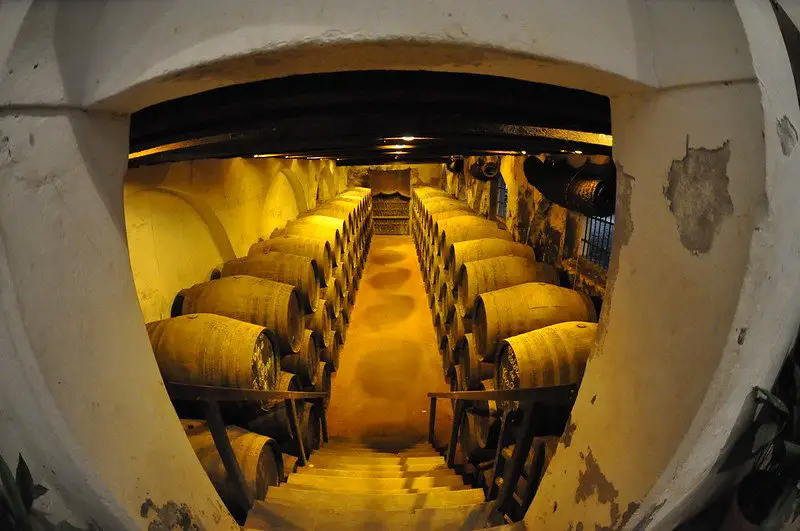
Let’s break down what the solera system is and how it works because I think this is probably the most complicated step.
The solera is a traditional method of wine blending maturation used throughout the Sherry region. It’s made up of huge, 600-liter old oak barrels (typically American oak thanks to Spain’s conquest of the Americas).
The barrels in the solera are grouped into criaderas (nurseries in Spanish – pronounced cree-ah-dare-uh). Each criadera has a wine of a similar age. The criaderas are marked to indicate the age of the wine inside.
- The oldest wine in the winery is held in the solera (the floor or bottom level)
- The second oldest wine is held in the 1st criadera.
- The next oldest wine is held in the 2nd criadera, and so on.
So, wine in the 2nd criadera is older than wine in the 3rd criadera and wine in the 3rd criadera is older than wine in the 4th criadera.
All of the barrels for a criadera are stacked together in the winery.
In order to put the newest vintage (young Palomino wine) into a barrel, the winery has to remove and bottle some of the older wine to make room.
This is why the solera is as much a blending system as it is an aging system for Sherry wines.
4 Sherry Solera Rules
- Rule #1: No more than 40% of the wine from the oldest barrels (the solera) can be removed at one time.
- Rule #2: The same portion of wine that gets removed from the solera needs to be removed from the 1st criadera (second oldest wine), to replace the wine taken out of the solera (bottom level).
- Rule #3: The same portion of wine that was removed from the 1st criadera needs to be refilled using wine from the 2nd criadera, and so on.
- Rule #4: The newest wine from this year’s vintage that was waiting in the sobretabla (see Step #4 above), gets added into the youngest criadera, blending in fresh wine to the aging system.
Before adding the new wine to any of the existing barrels, the winery pulls off and bottles existing wine for distribution and sale.
The winery can blend together portions of wine from any of the levels in the solera system, including from the oldest barrels (the solera itself), and younger barrels (a 4th or 5th criadera). This allows the winemaker to craft unique wines and give freshness to older wines.
How Biological Aging Works with Sherry
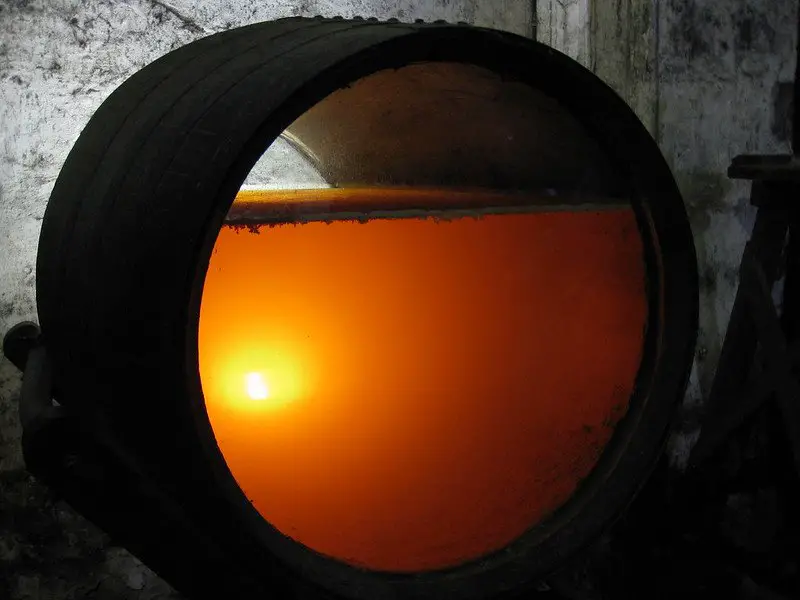
Biological aging in Finos and Manzanilla Sherries involves a living layer of flor (pronounced floor), composed of several strains of yeast. Here’s what you need to know about biological aging and Sherry wine:
- Flor yeast come from the skins of the grapes and exists in the wineries naturally, so will start to grow and multiple on the wine’s surface under the right conditions.
- The yeast need oxygen to survive, and so the Sherry barrels aren’t filled up to the top, but rather have a little space between the wine and the top of the barrel.
- Flor yeast consume alcohol, so the wine’s alcohol level will drop over time.
- Flor yeast need humid conditions to survive. This is a key reason Sherries are made near the ocean. The wineries will even spray down their floors to keep humidity levels up.
What Does Flor Do to Sherry Wines?
Flor consumes alcohol and releases acetaldehyde. In normal people’s speak, this chemical process gives aromas of bruised apples, hay, and chamomile.
Flor consumes glycerol (a natural byproduct of fermentation). Glycerol adds a viscous quality to wine. Lower levels of glycerol mean that your Finos and Manzanillas will have lighter bodies.
Fun Fact: Glycerol’s used in products like hand lotions. Go check out the ingredient list in a hand lotion if you have one.
As the flor yeast die, they’ll fall to the bottom of the wine barrel and slowly start to decompose. This is a natural process, called autolysis (also happens in Champagnes).
This adds a slightly savory, nutty, biscuity flavor and texture to Sherry wines.
Flor yeast needs fresh, young wine to survive.
Because flor yeast consume nutrients, alcohol, glycerol, and acetic acid over time, they’ll die without an infusion of younger wines.
This is why the whole, convoluted, complicated system of fractional blending with the solera and criadera system exists. To feed the yeasties.
What Makes Sherry So Dry?
Dry Sherries can seem particularly dry. Sherries start out as a dry white wine and if they go through biological aging, the flor yeast consumes glycerol. Glycerol has a slightly sweet taste.
Lower glycerol means that your Sherry will taste very, very dry.
Okay, now that we’ve covered the basics of how to make dry Finos and Manzanillas, let’s get into the other Sherry wine styles, which are, for the most part, variations on this process.
How Do They Make Amontillado Sherry?
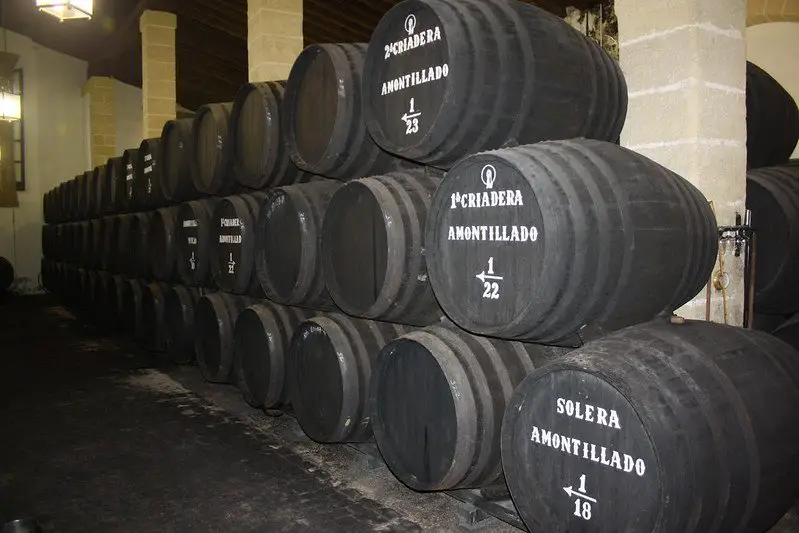
- Step 1: Start with the same process and ferment a dry white wine using Palomino grapes.
- Step 2: Fortify the wine to 15%-15.5% ABV and start aging the wine in the solera system, just like a Fino.
- Step 3: Take the wine out of the Fino solera system early and re-fortify the wine to 17% ABV. This will kill any remaining flor yeast (they can’t survive high alcohol levels).
- Step 4: Move the wine to an Amontillado solera system where the wine ages oxidatively (exposed to oxygen by not filling up the barrels all of the way).
Explore: What Makes Amontillado Sherry So Special?
How Does Oxidative Aging Work for Sherry Wine?
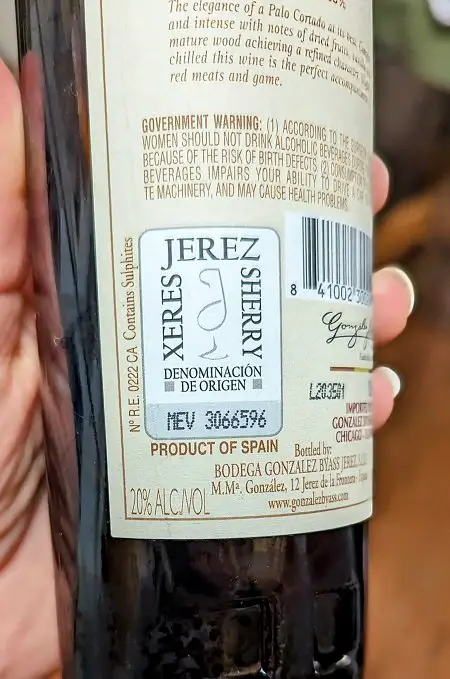
Oxidative aging exposes the Sherry wine to oxygen by not filling up the barrels all the way. This will slowly transform the wine from light yellow to amber and then brown. As the Sherry ages, water evaporates and the alcohol level rises (the opposite of biological aging).
How does oxidative aging transform your Sherry wine? Oxygen exposure gives your wine complex nutty, caramel flavors.
Here’s what happens with oxidation.
- Water evaporation means that the flavors, acid, and glycerol in the wine become concentrated, giving you a more intense, fuller-bodied Sherry wine.
- The hay and chamomile flavors found in Finos transform to tertiary aged notes including caramel and nuts. (I always liken it to praline.)
- Ethyl acetate and acetic acid levels slowly rise, giving you varnish and nail polish flavors in your Sherry.
Amontillado Sherries are hands down my favorite Sherry style. You get the best of both worlds: a little biological aging and a little oxidative aging all in this intoxicating, complicated wine.
Helpful Tip: Here’s a more in-depth look at Amontillado Sherry, if you’re interested in checking it out (I like Amontillado Sherries so much that they get their own post. I’m biased.)
Let’s move on to purely oxidatively aged Sherry, called Oloroso Sherry.
How Do They Make Oloroso Sherry?
- Step 1: Start with the same process and ferment a dry white wine using Palomino grapes.
- Step 2: Fortify the wine to 17% ABV and move the wine to an Oloroso solera system in barrels that aren’t fully topped up to allow oxygen to come into contact with the wine.
Olorosos are brown in color (they’ve oxidized), with dominant nutty walnut, toffee, and dried citrus peel notes. Oloroso wines are aged for a minimum of three years. Higher quality Olorosos are kept in the solera for many years and can be outstanding in quality.
How Do They Make Cream Sherries?
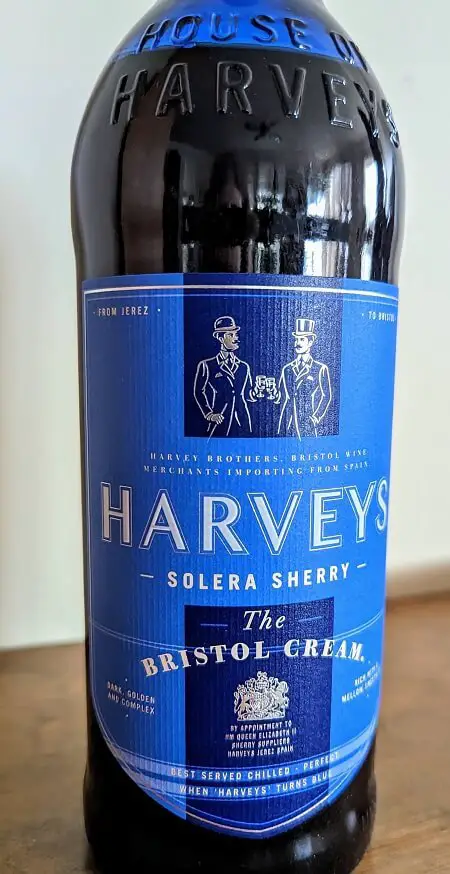
Cream Sherries start out just like dry Finos, Manzanillas, Amontillados, and Olorosos, but are sweetened before bottling.
After the Sherry finishes aging in the solera system, the winemaker adds a sweetening component to the wine. Inexpensive Cream Sherries have concentrated grape must (unfermented juice) added to them.
Premium (more expensive) Cream Sherries use a small amount of the luscious Pedro Ximenez Sherry wine blended in to add sweetness.
What Makes Cream Sherry? 3 Styles
Here’s an easy style breakdown for Cream Sherries made from dry white Palomino wine that helps me navigate the Sherry aisle:
- Pale Cream Sherry = Fino Sherry + Sweetness
- Medium Cream Sherry = Amontillado Sherry + Sweetness
- Cream Sherry = Oloroso Sherry + Sweetness
The sugar in Cream Sherries gives the wine a fuller, smoother texture. Think of sipping on pralines or toffee, with the sugar kick added in. You can see why it was a popular wine style in the 70s.
Who doesn’t like liquid praline?
Easy Sherry Wine Pairing Ideas
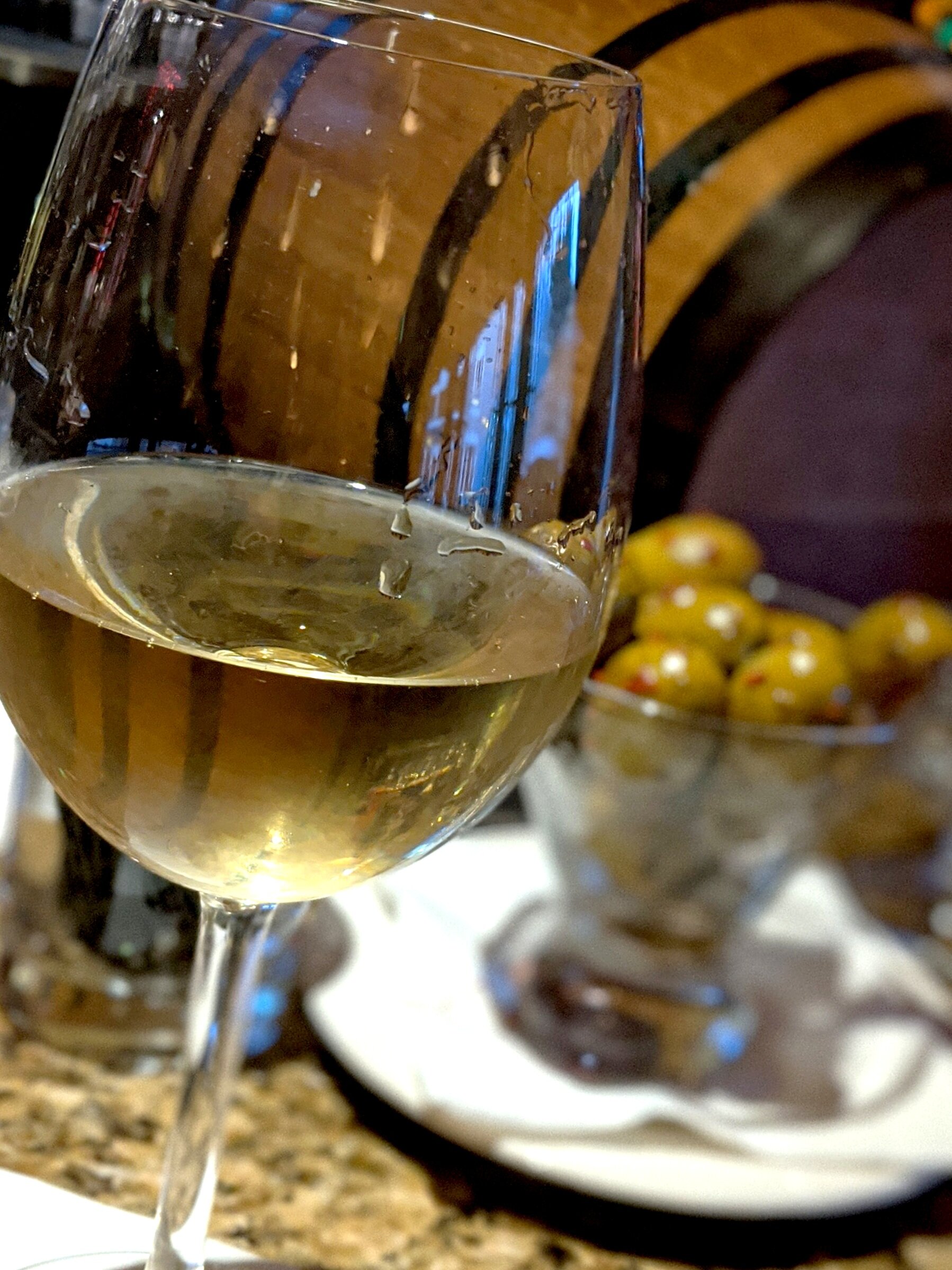
So, now you know the basics of how Sherry is made and the different styles available. Sherry makes a delightful aperitif but pairs best with food and it’s important to choose the right type of Sherry to complement the flavors of the food you’re eating.
- Fino or Manzanilla Sherry pairs well with light appetizers such as olives, nuts, calamari, sardines, or hard cheeses.
- Amontillado Sherry pairs with more savory foods, like turkey sandwiches, herbed cheeses, onion rings, and lentil soups.
- Oloroso Sherry pairs well with heartier foods, like beef stew, carnitas tacos, shepherd’s pie, pasties, and spiced ribs.
How Is Sherry Served?
Serve Sherry wines slightly chilled (remove from your refrigerator 10 minutes before serving).
Sherry is a high-alcohol wine, so if you serve Sherry warm it will accentuate the alcohol aromas. Serve in small wine glasses, and pour a little over half the amount you pour for a regular glass of wine (3 oz instead of 5 oz).
Smaller pours help you moderate the amount of alcohol you’re drinking.
How Do You Know If Sherry Has Gone Bad?

It’s hard to tell if Sherry’s gone bad because it can have pungent aromas associated with off-wine (like varnish). But, you can tell that your Fino or Manzanilla Sherry are bad if they’ve turned from pale yellow to brown.
You’ll notice that you can’t smell the delicate chamomile or citrus peel aromas.
You can tell that your Amontillado and Oloroso Sherries are bad if the acetaldehyde and alcohol flavors dominate (it smells more like varnish and nail polish than wine).
- Fino and Manzanilla Sherries aren’t meant to age. You should drink them within a year or two of buying them and within a week of opening the bottle.
- Amontillados and Olorosos won’t improve in bottle and should be enjoyed within a few weeks of opening as well.
Side Note: I’ve gone to Spanish tapas restaurants to do Sherry tastings and the restaurant has served leftover Amontillados and Olorosos. They didn’t taste like anything except alcohol and nail polish. I was sad.
Keep all of your open Sherries in the fridge to help them last longer.
Helpful Tip: Here’s a great post on how to store leftover wine to extend its life expectancy.
Final Thoughts: Sherry’s a Mystifying Treat

Even if you’re not a Sherry fan (yet), you can appreciate the winemaking magic that crafts these uniquely Spanish wines.
Starting with the dry white base wine using Palomino grapes, Sherry goes through a series of complicated steps to develop their signature profile of nuts, caramel, hay, chamomile, and raisin.
Every bottle of Sherry wine carries the rich, layered story of vintages past.
Give Sherry time to grow on you. Trust me. Pair it with food, and watch it transform your wine drinking experience.
Explore:
Madeira vs Sherry: What’s the Difference?
Port vs Sherry: What Will You Choose?
Thirsty for More?
Here’s a sample Sherry tasting flight, along with a more detailed overview of Sherrie’s history with the pirate, Sir Francis Drake.
Do you love Spanish wines? Check out this post on 8 Spanish Red Wines you should definitely try.



